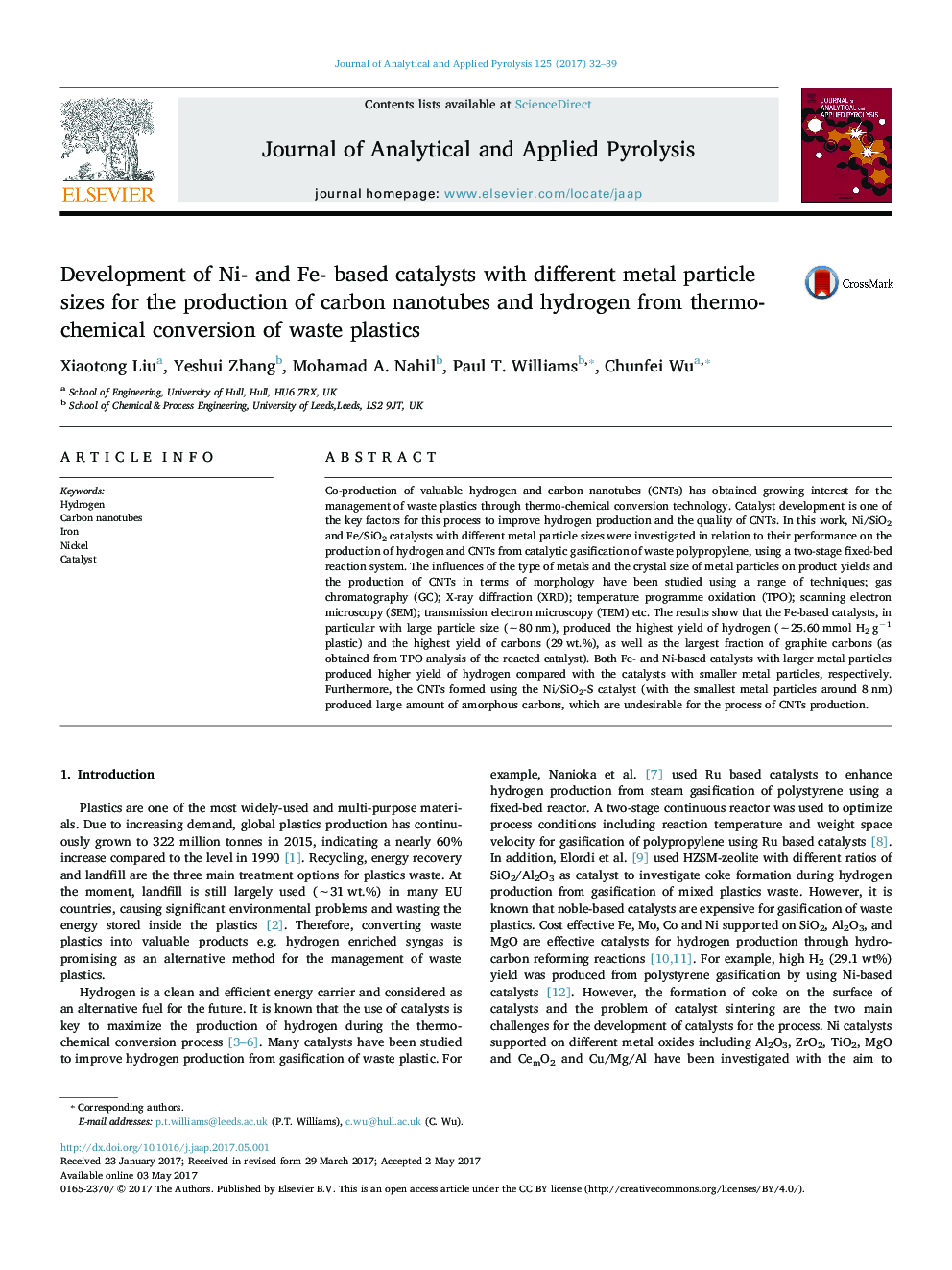| کد مقاله | کد نشریه | سال انتشار | مقاله انگلیسی | نسخه تمام متن |
|---|---|---|---|---|
| 5134475 | 1492952 | 2017 | 8 صفحه PDF | دانلود رایگان |

- Carbon nanotubes and hydrogen were produced from waste polyethylene.
- Ni- and Fe- based catalysts were used with different metal particle sizes.
- Catalyst with large metal particles produced higher yield of hydrogen.
- Fe-based catalyst produced higher yields of carbon and gas.
- Ni/SiO2 catalyst with small metal particles (â¼8Â nm) produced more amorphous carbons.
Co-production of valuable hydrogen and carbon nanotubes (CNTs) has obtained growing interest for the management of waste plastics through thermo-chemical conversion technology. Catalyst development is one of the key factors for this process to improve hydrogen production and the quality of CNTs. In this work, Ni/SiO2 and Fe/SiO2 catalysts with different metal particle sizes were investigated in relation to their performance on the production of hydrogen and CNTs from catalytic gasification of waste polypropylene, using a two-stage fixed-bed reaction system. The influences of the type of metals and the crystal size of metal particles on product yields and the production of CNTs in terms of morphology have been studied using a range of techniques; gas chromatography (GC); X-ray diffraction (XRD); temperature programme oxidation (TPO); scanning electron microscopy (SEM); transmission electron microscopy (TEM) etc. The results show that the Fe-based catalysts, in particular with large particle size (â¼80Â nm), produced the highest yield of hydrogen (â¼25.60Â mmol H2Â gâ1 plastic) and the highest yield of carbons (29Â wt.%), as well as the largest fraction of graphite carbons (as obtained from TPO analysis of the reacted catalyst). Both Fe- and Ni-based catalysts with larger metal particles produced higher yield of hydrogen compared with the catalysts with smaller metal particles, respectively. Furthermore, the CNTs formed using the Ni/SiO2-S catalyst (with the smallest metal particles around 8Â nm) produced large amount of amorphous carbons, which are undesirable for the process of CNTs production.
Journal: Journal of Analytical and Applied Pyrolysis - Volume 125, May 2017, Pages 32-39